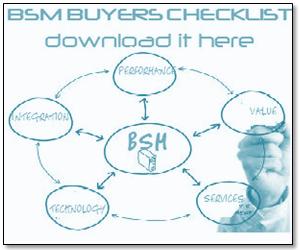The Hub Commentary_
Applying a social interface to IT may sound crazy to the technologists, however, if you move past the initial reaction and think about many of the initiatives from IT and the response from the business, it may just be the interface that drives acceptance. We have all been exposed and most (even I must admit to it) have used, adopted and/or totally embrace the social media explosion. Business Service Management is practice and part of that practice is the interactions with our customers and how they want to interact with IT.
I consider myself middle of the road in adoption as I still like the human interaction and speaking with colleagues and customers face-to-face, however, those interactions become planned and raise in relevance given the accepted methods of quick, short interactions that occur all day long with text messages, emails, Twitter, Facebook, blogs, RSS Feeds, you name it.
The earliest form was chat and we all know it has been a long standing request for most service and support software to deploy chat methods to ask for help. This could be a long post, but let’s keep it simple. Social Media interfaces for the sake of it will fail, Social Media interfaces applied in the right situations could be wildly successful. A couple of examples that pop to mind are:
Service Dashboards – Most of us think of these as one-way and very limited information and thus they are useful and provide information during a service impacting event and I would debate how much they are used outside of IT during smooth running hours. However, Service and Support is a great example of where a social interface may make sense. The experience is 2 way – giving, taking and sharing information. A smart interface to accept and present information rather than merely accepting a new ticket. Tobin’s power outage post is a great example. Instead of entering a ticket, he clicked his way to the right information.
Configuration/Inventory/Service Information: Wikipedia is a great example of keeping information accurate and relevant through the use of consuming audience. Now apply that what is typically thought of as the most technical of IT projects, the CMDB or Configuration Management System. We all use a variety of technical devices and we all have varying levels of comfort and/or time to deal with servicing them, however, up-to-date information is required for service and support.
At the very least, we want to know when we will be affected by maintenance or service outages. What if we could subscribe to communities of users of the various applications we use day-to-day and could find the power users of Excel or Adobe Presenter in our organization to help us with that important presentation? The classic support challenge has been the questions of how to use a piece of software, the users of the software are the best choice outside of the supplier and finding those who may have figured out a clever function might be helpful.
Just a couple of applications that come to mind. I agree with Nigel, the Social Media interfaces are coming, we use them in daily life and should seek to evaluate the best method of interacting with our customers.
How socially accepted is your IT?
Michele
___________________
IT has been here before, having to clean up islands of automation that left organizations unable to coordinate information and react rapidly to changing market dynamics. (Read Full Article…)














